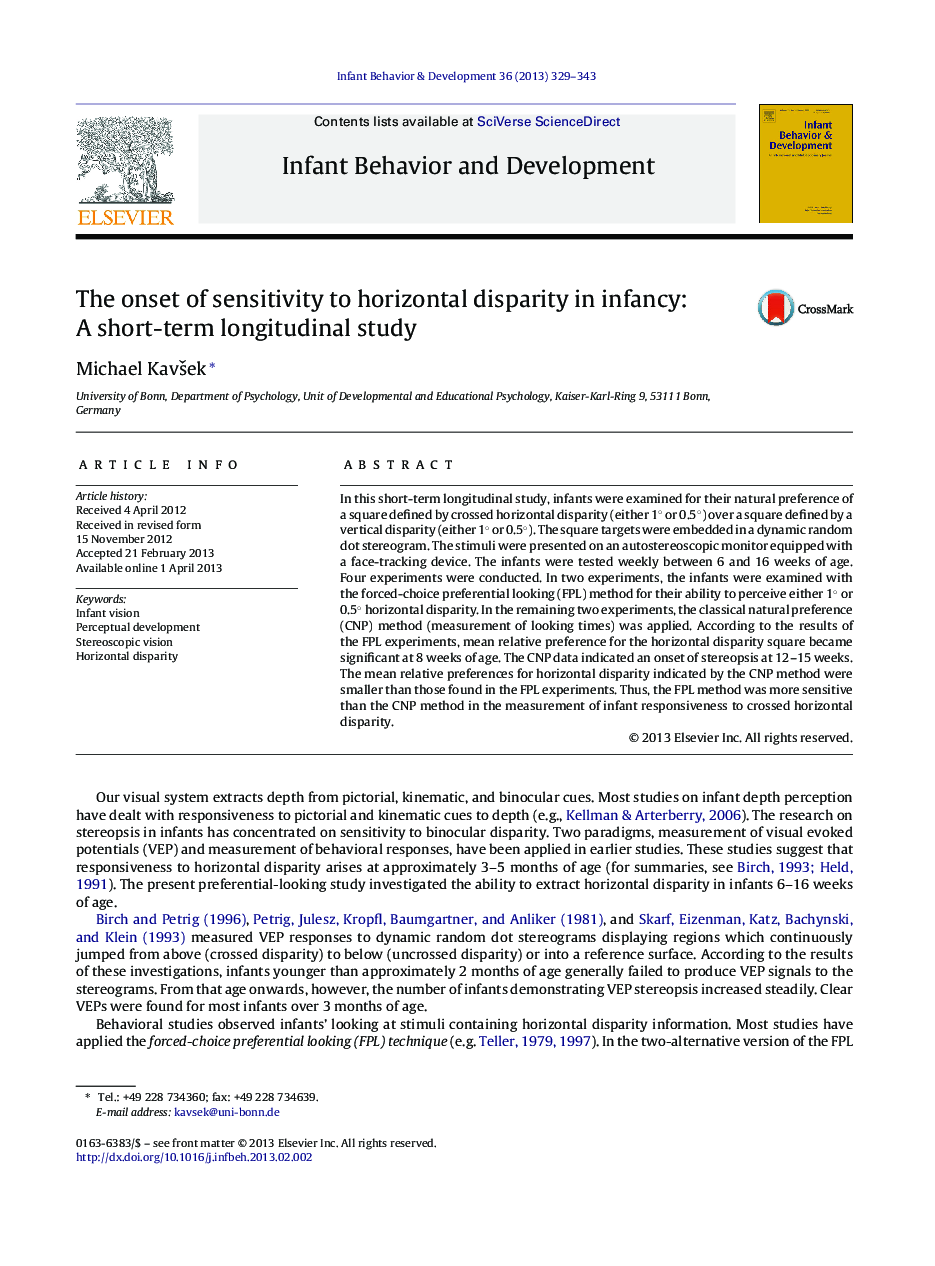| Article ID | Journal | Published Year | Pages | File Type |
|---|---|---|---|---|
| 917241 | Infant Behavior and Development | 2013 | 15 Pages |
In this short-term longitudinal study, infants were examined for their natural preference of a square defined by crossed horizontal disparity (either 1° or 0.5°) over a square defined by a vertical disparity (either 1° or 0.5°). The square targets were embedded in a dynamic random dot stereogram. The stimuli were presented on an autostereoscopic monitor equipped with a face-tracking device. The infants were tested weekly between 6 and 16 weeks of age. Four experiments were conducted. In two experiments, the infants were examined with the forced-choice preferential looking (FPL) method for their ability to perceive either 1° or 0.5° horizontal disparity. In the remaining two experiments, the classical natural preference (CNP) method (measurement of looking times) was applied. According to the results of the FPL experiments, mean relative preference for the horizontal disparity square became significant at 8 weeks of age. The CNP data indicated an onset of stereopsis at 12–15 weeks. The mean relative preferences for horizontal disparity indicated by the CNP method were smaller than those found in the FPL experiments. Thus, the FPL method was more sensitive than the CNP method in the measurement of infant responsiveness to crossed horizontal disparity.
► Infants 6–16 weeks were tested longitudinally for their responsiveness to horizontal disparity. ► The stimuli were dynamic random dot stereograms, presented on an autostereoscopic monitor. ► Looking times and forced-choice preferential looking (FPL) were observed. ► The FPL data indicated an earlier onset of stereopsis than the looking times.
